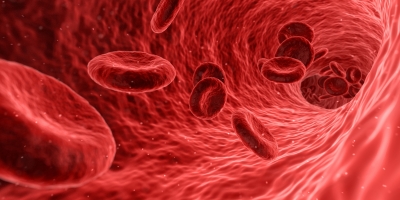New York, April 9 : A team of researchers has used CRISPR gene editing, a type of ‘molecular scissors,’ to understand how deletions in one area of the genome can affect the expression of nearby genes.
The study, published in the journal Blood, will help researchers investigate new therapeutic approaches for one of the world’s most devastating genetic blood disorders, sickle cell disease.
“Sickle cell disease and beta thalassemia, a closely related disease, are inherited genetic conditions that affect red blood cells,” said researcher Kate Quinlan from the University of New South Wales.
“They are fairly common worldwide — over 318,000 infants with these conditions are born every year and haemoglobin disorders cause 3 per cent of deaths in children aged under five years worldwide,” Quinlan added.
Genetic mutations, specifically, a defect in the adult globin gene, are responsible for the disorders.The mutant genes affect the production of haemoglobin, the protein in red blood cells that carries oxygen around our bodies.
“Interestingly, when children are born, they do not show disease symptoms at first, even if they have the mutations, because, at that stage, they are still expressing foetal globin and not yet adult globin.That’s because we have different haemoglobin genes that we express at different stages of development,” Quinlan said.
“As the foetal globin gets turned off, and adult globin gets turned on, which happens within about the first year of life, the symptoms start to manifest,” Quinlan added.
When that happens, the red blood cells take on unusual, sickled shapes and block small blood vessels, causing pain, organ damage, and premature death.
“The goal of our research is finding out how we can reverse the foetal to adult globin switch, so that patients continue to express foetal globin throughout life, rather than the mutant adult globin genes that cause blood cells to become stiff and block vessels,” said Quinlan.
For the study, the research team compiled data on the rare families that express foetal globin throughout life.
Then, they used CRISPR gene editing to replicate some of these big patient deletions, and the small deleted bit they all had in common, in cell lines in the lab.
“CRISPR allows us to ‘cut’ bits of DNA out of cells grown in the lab, to modify genes and see what happens as a result – it’s essentially a tool to figure out what genes do inside living cells,” Quinlan said.
“We found that deleting just that one little bit was sufficient to make foetal globin go up and adult globin down, which suggests that we have found the key mechanism that can explain why foetal globin levels remain high in these asymptomatic patients.”
Quinlan mentioned that “effectively, by deleting the adult globin ‘on switch’, we made the foetal globin ‘on switch’ active”.
vc/ksk/
#CRISPR #gene #reveals #biological #mechanism #common #New York #New York







